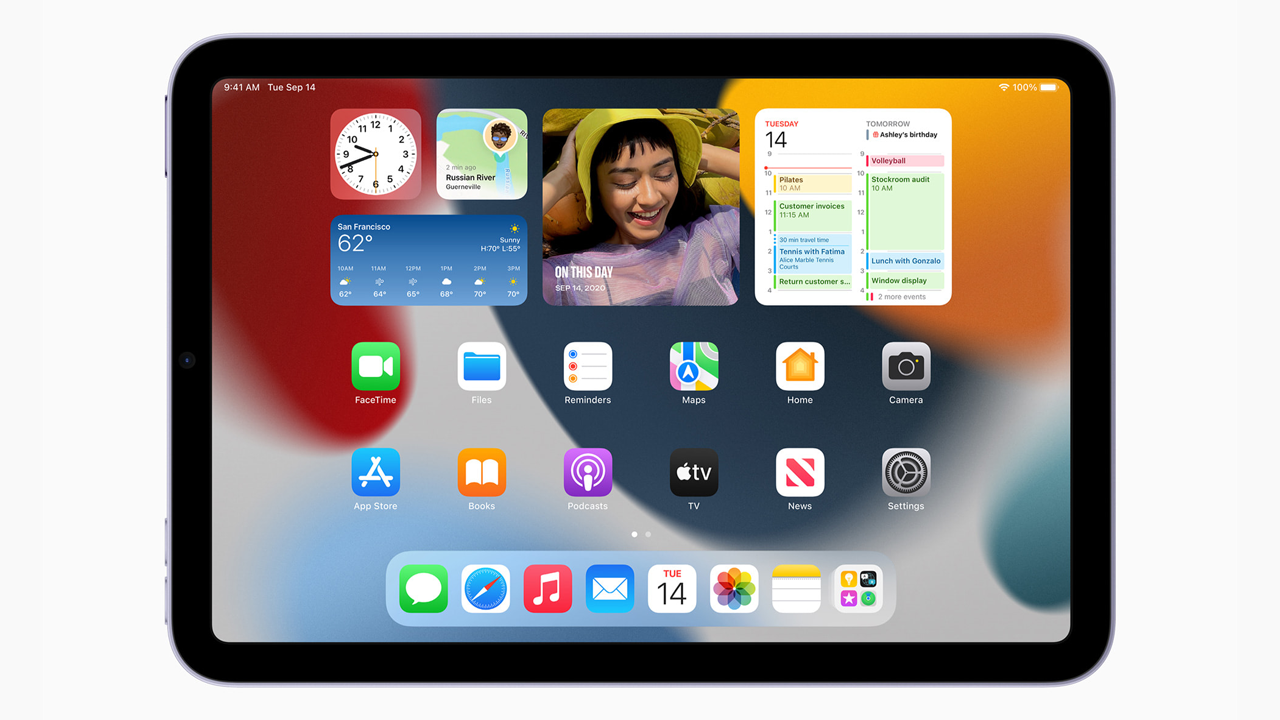-
Pros
- Beautiful interface design
- Mouse and keyboard support
- Better app icon organization
- Multitasking and multi-window features
- Home Screen widgets
- FaceTime now works outside of Apple’s walled garden
-
Cons
- Multitasking is still a bit awkward
- Some top new features only work with the very latest Apple products
With iPadOS 15, Apple brings its tablet operating system up to speed, adding the widget and app organization advances that previously appeared in the iPhone's iOS 14 release. iPadOS also gets some iPad-exclusive multitasking options along with other new features arriving both platforms’ version 15s. The iPadOS update comes just in time for the 2021 iPads, which sport stronger-than-ever AI processing. Many of the new iPadOS 15 features are better suited to the much larger iPad Pro, but many of them suit the new iPad Mini and standard iPads just as well. iPadOS remains the benchmark for tablet OSes.
What’s New in iPadOS 15?
Now for the payoff. Multitasking updates top what’s new in the OS, but the update also brings the excellent Smart widgets and App Library features from iOS 14 to the iPad. iMessage gets new features, Focus modes help you concentrate, and notifications are redesigned. Ancillary apps like Maps, Photos, and Safari see big updates, while the Translate app makes its debut on the iPad. Universal Control provides even more synergy with Mac computers and Live Text lets you work with text in photos. Siri, too, sees improvements, like better offline functionality, more realistic speech, and more sharing options. I’ll dig into these updates more deeply below.
How Can You Get the New iPadOS Version?
First, you need an iPad. The most basic iPad starts at $329, but you can spend up to $2,399 for an iPad Pro with 2TB storage and 5G. The Magic Keyboard ($349) or Apple Pencil ($99-$129) require separate purchases. That adds up to more than most high-power ultraportable laptops cost. For comparison, you can get the latest Samsung Galaxy Tab for $239 and an Amazon Fire HD 8 Plus for $109.99. Microsoft Surface tablets are full PCs though they work as tablets, too; they start at $399 for the Surface Go 2 and rise to $1,999 for a Core i7 based Surface Pro with 16GB RAM and 1TB storage.
Apple never forces OS updates, but it certainly nags you when they’re available. It’s a good idea to download these updates because they help protect your devices from security vulnerabilities, to which Apple devices are not immune, contrary to popular opinion. You can install iPadOS 15 on any iPad that contains an A9 or later CPU, which includes the following models:
|
iPad Pro 12.9-inch (5th generation) |
iPad (8th generation) |
|
iPad Pro 11-inch (3rd generation) |
iPad (7th generation) |
|
iPad Pro 12.9-inch (4th generation) |
iPad (6th generation) |
|
iPad Pro 11-inch (2nd generation) |
iPad (5th generation) |
|
iPad Pro 12.9-inch (3rd generation) |
iPad mini (6th generation) |
|
iPad Pro 11-inch (1st generation) |
iPad mini (5th generation) |
|
iPad Pro 12.9-inch (2nd generation) |
iPad mini 4 |
|
iPad Pro 12.9-inch (1st generation) |
iPad Air (4th generation) |
|
iPad Pro 10.5-inch |
iPad Air (3rd generation) |
|
iPad Pro 9.7-inch |
iPad Air 2 |
|
iPad (9th generation) |
You can find out which model you have by going into Settings > General > About and looking at the Model Name section.
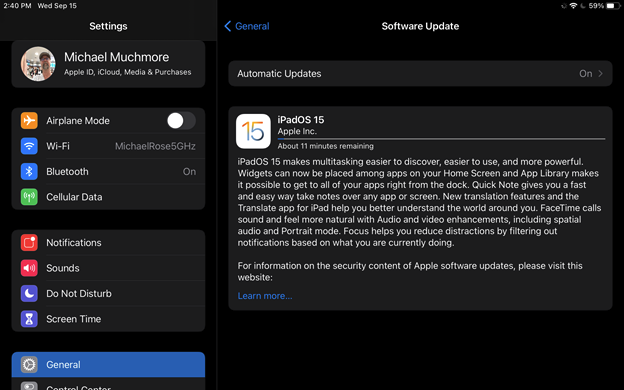
If you have an eligible device, you get the iPadOS 15 update by navigating to Settings > General > Software Update and selecting Download and Install. If your iPad has a passcode, enter it. Agree to Apple's terms and then wait. You see Update Requested on the screen, which means Apple has added you to its download queue. Once the update begins downloading, you get a time estimate; how long you have to wait depends on how many people are trying to upgrade. You also need to reboot the tablet, which could take a few minutes.
Multitasking Updates
The iPad has long relied on a perplexing system of multi-windowing; Split View and Slide Over work completely differently and require difficult, nonintuitive finger-swipe gestures. An informal poll of PCMag staff who use iPads repeatedly turned up the word frustrating—and these are the Apple fans in our midst. Apple has revamped multitasking in iPadOS a few times, and version 15 is the latest attempt to right the multitasking ship. Let's see how the new multitasking system fares in actual use.
A big advantage of iPadOS 15’s multi-windowing is that those awkward swipes have been replaced by a clear menu that appears when you tap the three dots at the top of the screen. This dialog box lets you easily select the Side by Side (two halves), Slide over (one side narrower), and full-screen options.
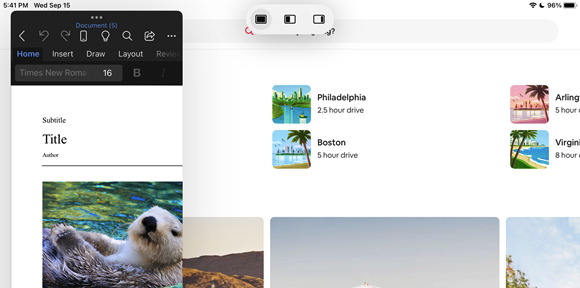
If you only have one app showing and tap the narrow rectangle for Slide Over, its window becomes a sliver on the side of the screen with cut-off text and images. This is so that you have access to all your app icons.
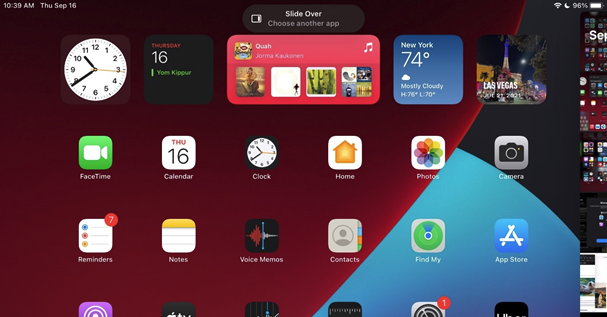
Thankfully, a message at the top tells you to choose another app, and once you do that, you see the expected Slide Over view:
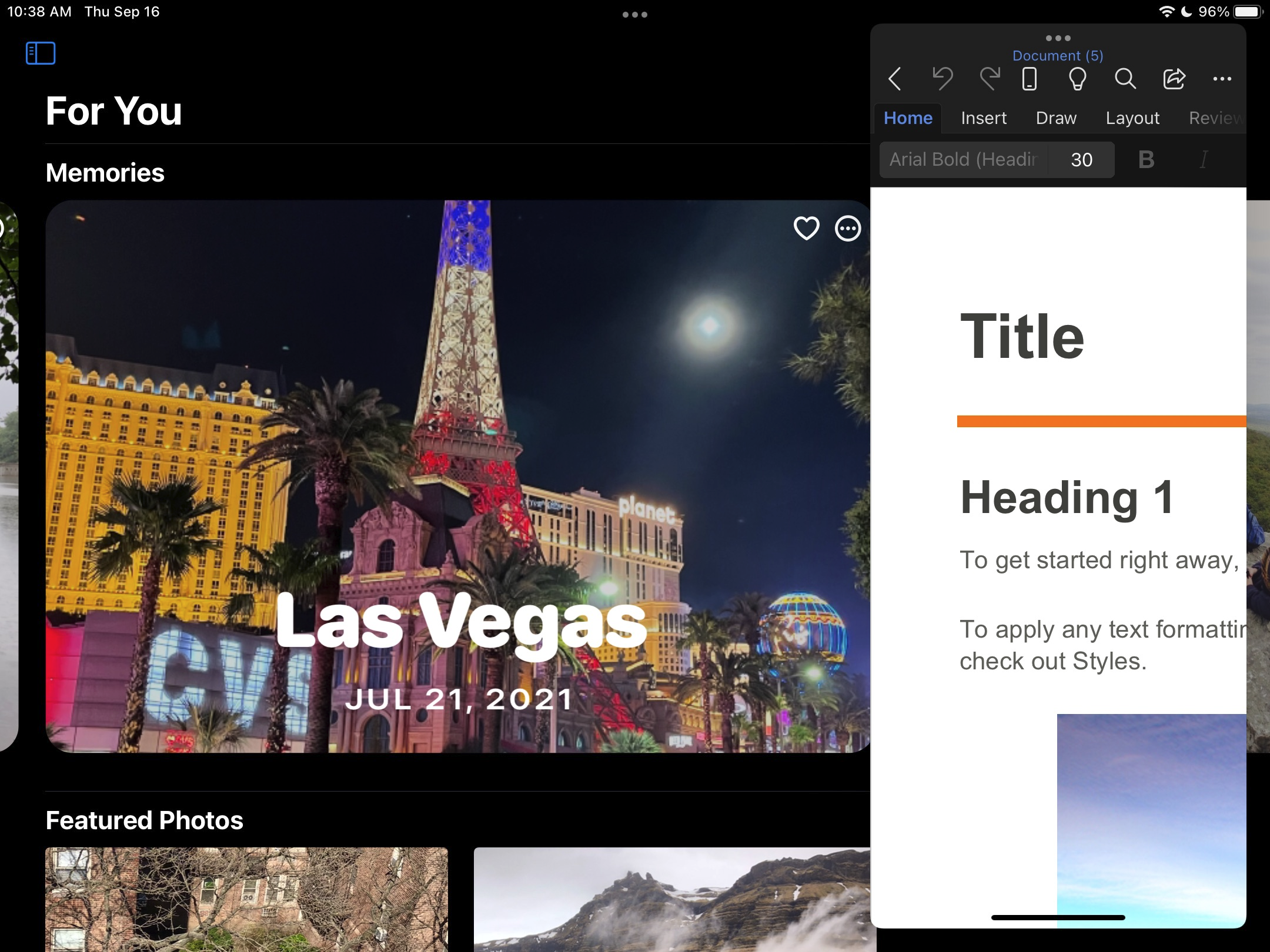
Slide Over Windows are always on top of other apps, but you can (if you’re dexterous) swipe a Slide Over window to the other side of the screen if that works better for you. I’m still not sure that the extra complexity Slide Over introduces is worth any benefits; I suppose if you’re browsing a website or watching a show in the main window and you want a scrolling social feed down the side, it could make sense.
The Split View by default shows each app taking up exactly half the screen, but you can drag the border between the two halves to get one of the windows almost as narrow as a Slide Over window. Some apps, however, reported “Split View Not Supported.” Another thing I had difficulty with was when I had a Slide Over window but wanted to full-screen the app that was taking up the main part of the screen; the full-screen button was disabled. Here’s Split View with apps taking up equal halves of the screen:
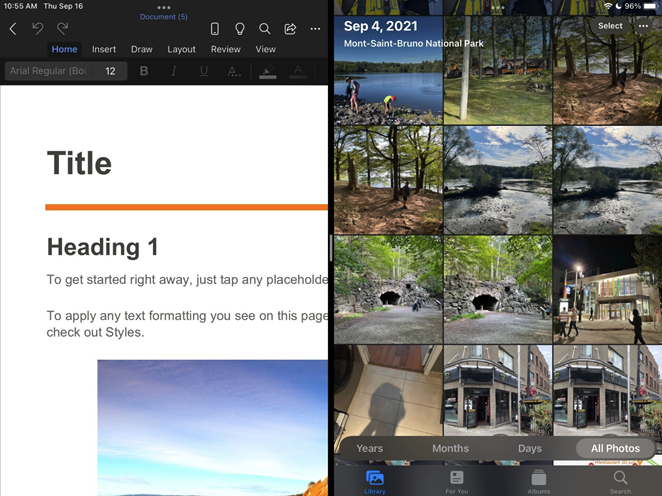
Yet a fourth windowing option is Center Window, which currently seems to apply to Apple apps, such as Messages and Mail, only. With this option, you can pop out a text message or email to the middle of the screen. You then have a choice of four window modes from the three-dot menu at the top:

The final new multitasking feature in iPadOS 15 is the updated Shelf. It’s what you’d call the dock or taskbar on a desktop OS and is well designed and welcome on the tablet OS. The Shelf only shows up when you’re on the home screen or in the task-switching view. The Shelf doesn’t indicate which apps are part of a Split Window, but Slide Over apps show as a narrow pillar in the task-switching view:
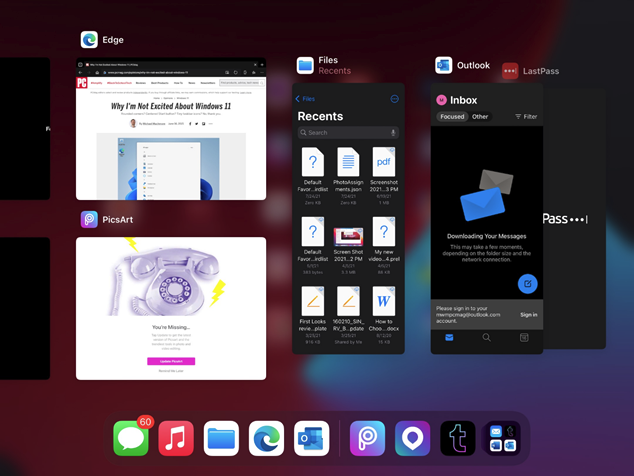
The last icon on the Shelf is the extremely useful App Library, which I’ll discuss in the next section.
Widgets and App Library
The Widgets and App Library features arrived in iOS on iPhone in version 14 but are just now available in iPadOS. They’re one of the best things about the new version. Yes, iPads already did well with widgets and let you pin them to the side of the home screen in Today View, but now, as on iOS, you can place them in the main area of the home screens.
Even better are Apples’ Smart Stack widgets, which show you apps the algorithm underlying the feature has determined you may want, based on your usage pattern. For example, if you always open the MyFitnessPal app first thing in the morning to enter your weight, its icon pops up every morning in the Smart Stack. The Smart Stack icon is four times as big as a normal icon, making it easier to see and tap. Note that you can no longer pin Today View widgets in the side panel—there’s no need to, because you can now pin widgets on the home screen.
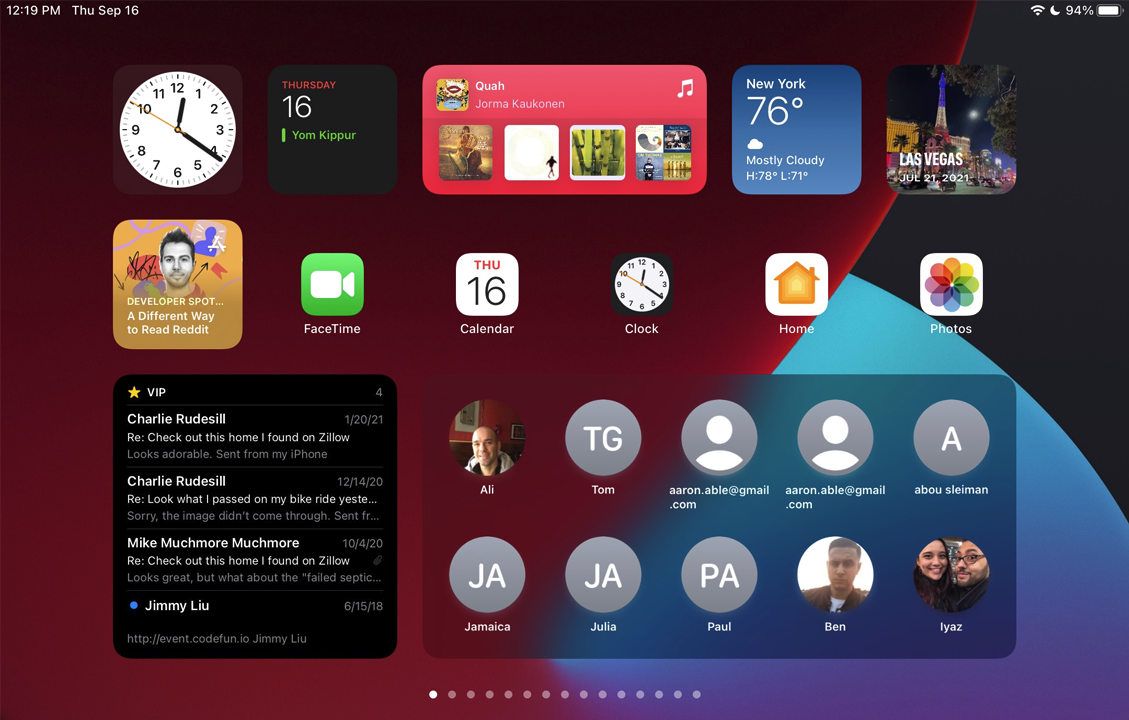
The rich ecosystem of iPad apps is a huge part of the iPad's appeal, but you can quickly find yourself with a very large collection to management. App Library saves you from having to organize pages and pages of home screens loaded with apps you have accumulated over the years. The Library automatically groups apps by type and lets you search at the top. You can delete apps in the Library and drag them out onto a home page. The iPad’s Shelf even includes an App Library icon. On the iPhone, you have to page to the last home screen to find this option.
In Settings, you can choose to have newly installed apps appear either only in the Library or on a home screen as well. That first option helps you avoid home screen clutter. You can now also reorder or hide home screen pages. You do this by holding a finger down on the background and tapping the dots along the bottom that represent the pages. Then you see a screen like this that lets you rearrange or hide the pages by unchecking their check boxes:
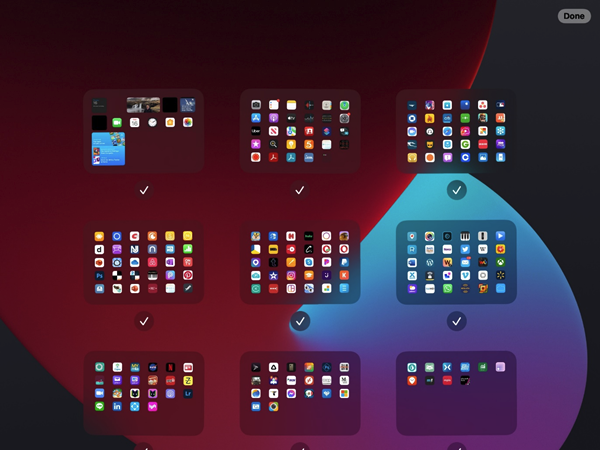
SharePlay
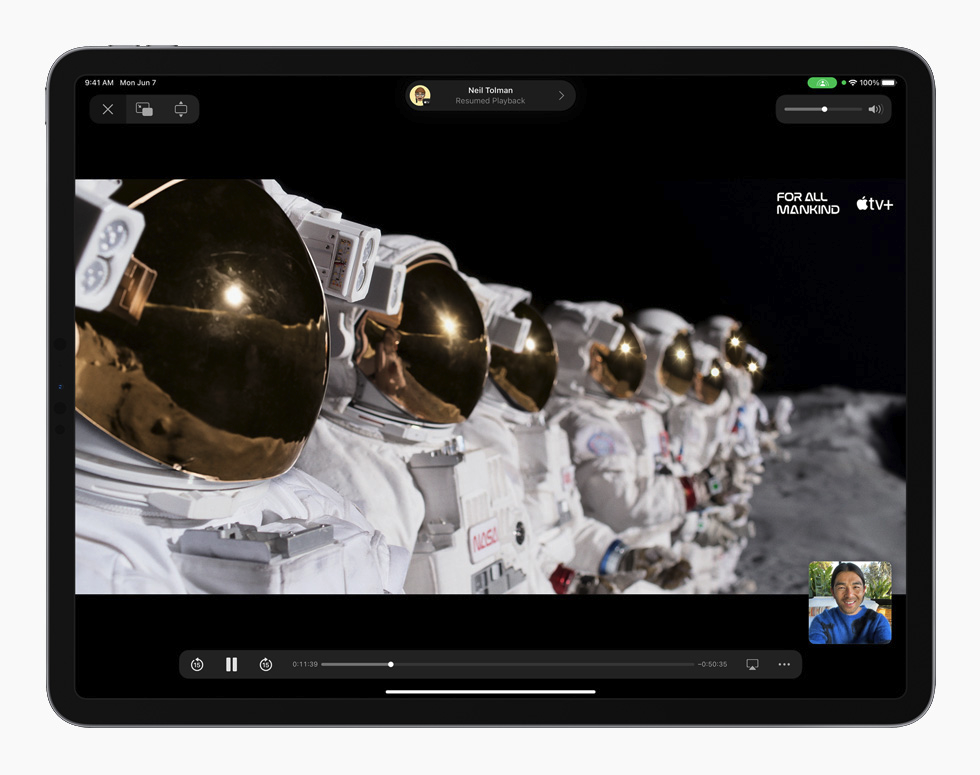
I don’t like when other people talk while you’re trying to watch a movie, but for those who do, there’s iPadOS’s new SharePlay feature. The feature, which won’t be available until later in the fall, lets users play music simultaneously and watch or listen on multiple devices, such as a Mac or Apple TV. One welcome capability of SharePlay is that it integrates iMessage messages with FaceTime, so you can text while video-chatting.
A More Democratic FaceTime
The iPadOS update brings FaceTime in line with Zoom and Teams in a couple of ways, too: It lets users share their screen, blur their background, and show participants in a grid view. FaceTime in iPadOS 15 also boasts a couple of audio innovations: spatial audio and voice isolation, the former of which requires $200 AirPods Pro or $500 AirPods Max. Spatial Audio is not an Apple invention, having appeared in the Microsoft HoloLens AR headset in 2015. It’s also found in Dolby’s Atmos technology and Sony’s 360 Reality Audio in conjunction with Amazon Music HD, nugs.net, and Tidal. A cool aspect of Apple’s Spatial Audio is that if you turn your head, the sound sources remain stationary relative to your position.
Another innovative new FaceTime feature is Center Stage, in which the camera automatically centers a person in the view while they move back and forth. This only works on the most recent iPad models.
Of great interest is Apple opening the walled garden a crack by allowing FaceTime calls to non-Apple devices via a web link. I would like Apple to go even further and make an Android FaceTime app, however. On desktop, FaceTiming in a web browser works fine. You can send the link by email or just copy it to another messaging service—even SMS.
If the recipient’s browser is compatible (I found that Edge worked on Windows but not on Android, while Firefox didn’t work on either platform), you then allow them into the video chat. In my testing, the video quality on the non-Apple platforms was not as sharp as it usually is between Apple devices, but it was acceptable. Here’s how it looks in the Edge browser on a Windows PC:

Focus
Preventing your devices from taking over your life has been a push for Apple in recent OS releases, particularly with features like ScreenTime that are designed to prevent device addiction, clinically termed Screen Dependency Disorder. New for iPadOS 15 are Focus options, which let you tune notifications based on the activity you’re engaged in: work, personal time, sleep, fitness, mindfulness, gaming, reading, or driving.
Contacts not allowed through for a Focus mode will see your unavailable status in Messenger and supporting third-party apps, but an Urgent Message option lets them break through for emergencies. Your Focus status is synced to all your Apple devices, and as you might expect, for all the features to work, your contacts must be using Apple devices, too.
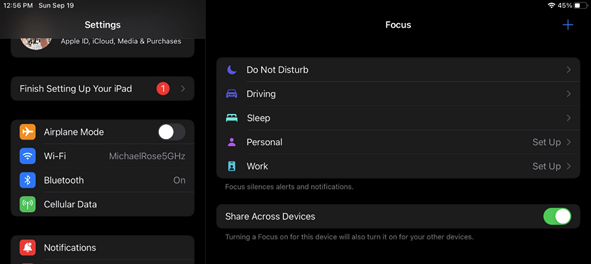
Notes and Quick Note
The Notes app sees plenty of updates, but the new Quick Notes feature is the real innovation in this area for iPadOS 15. The main Notes app now lets you apply keyword tags to notes and adds new collaboration options like @ mentions, color-coded highlighting by user, and an Activity view to see who updated a note recently. You can also now add images to notes handwritten with the Apple Pencil.
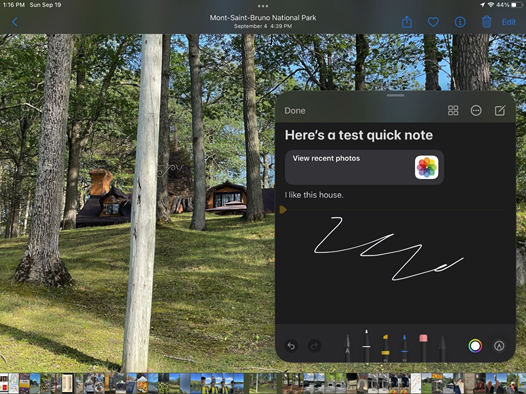
The brand-new Quick Note is something like a Post-It: It lets you attach notes to apps and gives you always-access to them with a swipe up from the lower-right corner of your screen.
Translate App Now on iPadOS
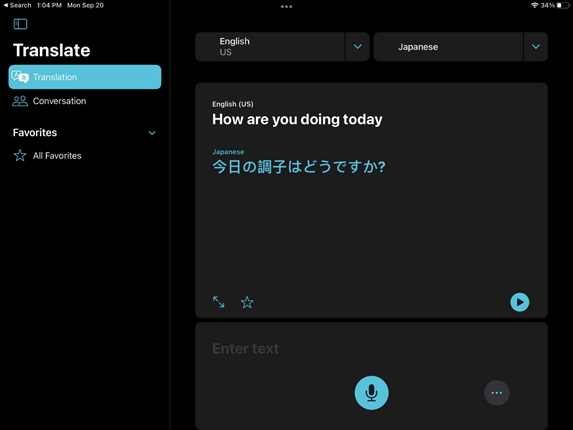
iOS 14 introduced Apple’s first foray into translation apps, and now it comes to the iPad. Apple Translate is still fairly limited compared with the more mature translation apps from Google and Microsoft. Apple’s app still only works with 10 languages (aside from English) compared with close to a hundred for the two big internet properties. It does form a solid feature basis, however, offering live conversation mode with automatic language detection.
Translate also works systemwide in other iPad apps. So, you can, for example, select text in another app and translate it to another language. Like the Google and Microsoft apps, Apple Translate lets you download languages for offline use. One beef I have with the app is that it doesn’t show you transliterations for languages that use non-Latin characters: For example, you don’t see Pinyin along with Mandarin characters or Romaji for Japanese.
New Features for Photos and Other Stock Apps
Many updates in the Photos app involve Memories and Apple Music, which of course Apple wants you to subscribe to. Photos now suggests background music for your Memories based on your listening history in Apple Music and by analyzing the content of the photos. Memories themselves have been redesigned, with new titles and animations, and new looks apply color adjustments to reflect the mood of the content. The biggest update for me: You can finally remove or add photos from the auto-creation.
One very cool new feature in Photos is Live Text. This lets you turn text in a photo into an actionable digital form. Live Text is available in the Camera and Notes apps as well. Just long-press on the text in a photo to turn it into digital text, then you can copy, paste, look up, or translate it. You can even call a number that’s in text in a photo. Unfortunately, this feature only works on recent iPads—my test 2019 iPad wasn’t new enough to see it in action.
The iPad’s default browser, Safari, also sees meaningful updates in iPadOS 15. Apple’s web browser now shows rounded, detached tabs like the recent Firefox redesign. And like Edge (Microsoft’s browser that’s available on Apple devices, too), the new Safari offers a customizable start page, complete with a section for sites shared with you in iMessage and another for Siri suggestions. Apple finally got rid of the dated 3D-tilted view for multiple tabs in favor of a more standard grid view.
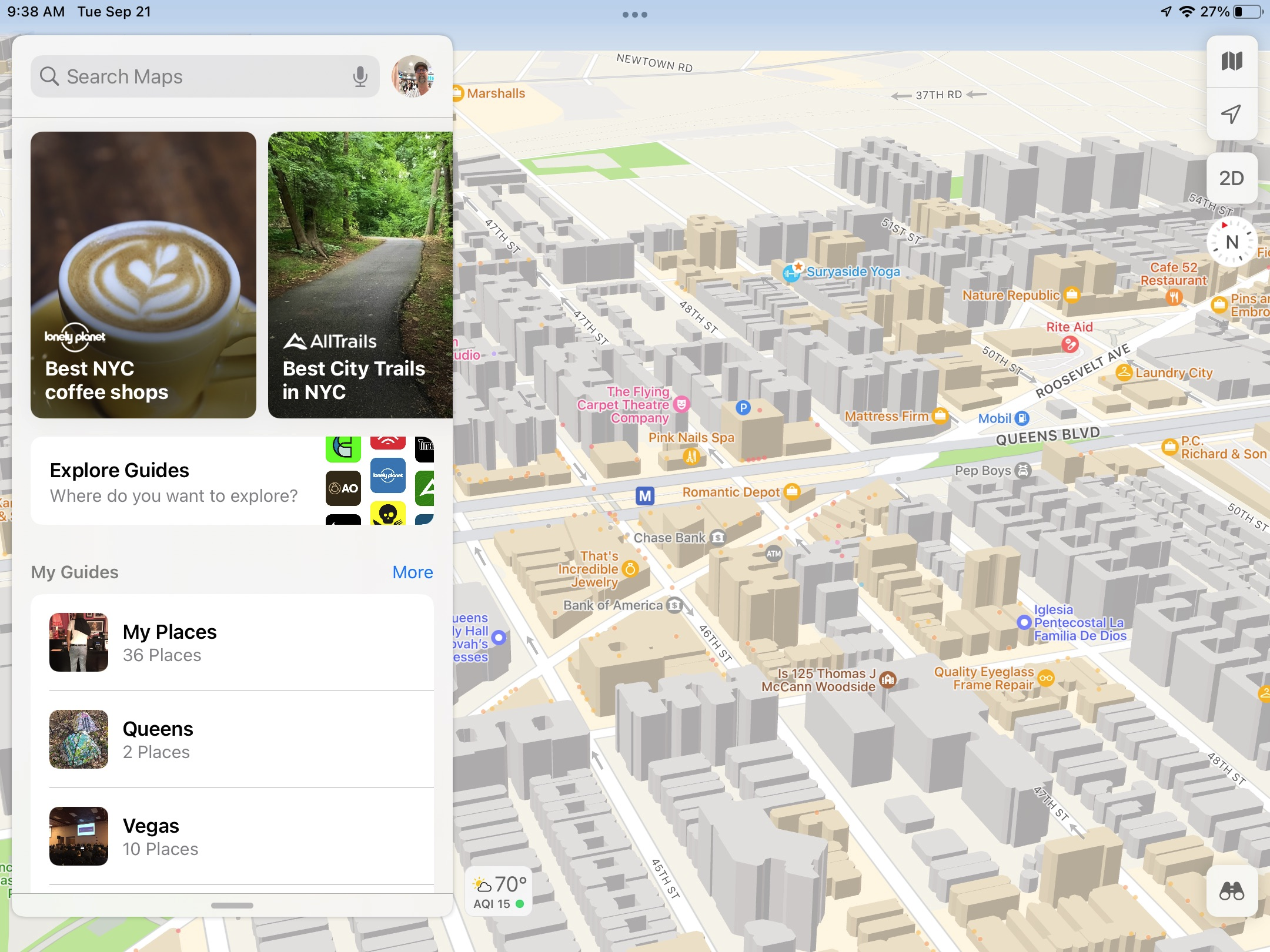
Maps, though less important on the tablet than on the phone, get some nifty new looks and features. You can now start your virtual traveling with a Google Earth-like globe view and city guides are more detailed. Transit directions tell you exactly which exit to use in those labyrinthine subway systems, and (similar to the popular Transit app) shows you when the next busses are leaving nearby. One cool new Apple Maps feature is the way it handles overpasses, in 3D view—these have long been perplexing in online maps, answering questions like “Is that the upper level or lower level of the bridge?” and “Where does that underpass lead to?”
Even More Privacy
With every iPadOS (and iOS) release, Apple adds more privacy features, as that’s one of its big selling points over competing operating systems, though not everyone is convinced of the company’s true dedication to privacy. With iPadOS 15, these involve the Mail and Siri apps. Apple Mail now hides your IP address from senders and doesn’t even let them see if you’ve opened the email. For Siri privacy, voice processing is now done on the device, so your dulcet tones are not sent over the airwaves to Apple servers. Previously, Apple had implemented a lot of privacy protections involving app permissions for location and tracking. Its iMessage service is end-to-end encrypted, too.
Universal Control
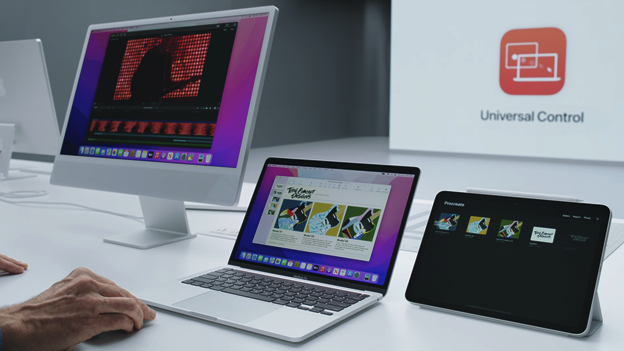
This lofty name just means that you can use your Mac’s mouse, keyboard, or trackpad with your iPad. It’s as much a macOS Monterey feature as an iPadOS one, but I think it may be even more important for the iPad. With no setup at all, you can move your cursor from the Mac to the iPad and move files back and forth between them—even across more than two devices!
Does iPadOS Enable Work or Play?
Of course, there’s so much more in iPadOS than we can cover in a review of reasonable length. If you’re not familiar with the existing features of the platform, we’ve covered previous features in our first review of iPadOS. Just scan that to get a grasp on the important iPadOS features that already exist, such as Apple Pencil and scribble support, privacy protections, and compact Siri and message notifications.
Especially since the introduction of the iPad Pro, Apple has pushed the concept of the iPad as a productivity tool, sort of a touch-screen laptop with support for a stylus and physical keyboard. With each new version of the tablet's iPadOS software, Apple attempts to make the interface more suitable for intensive multitasking, but it still falls short in this department. Make no mistake: iPadOS is wonderful software that enables you to be creative and productive, as well as helping you consume digital content in a more relaxed posture than sitting at a table with a laptop. iPadOS 15 still can’t facilitate the kind of intensive, effortless multitasking you get in a true desktop or laptop OS, but it's a wonderful resource while you relax on your sofa, and it’s still PCMag’s Editors’ Choice winner for tablet operating systems.

